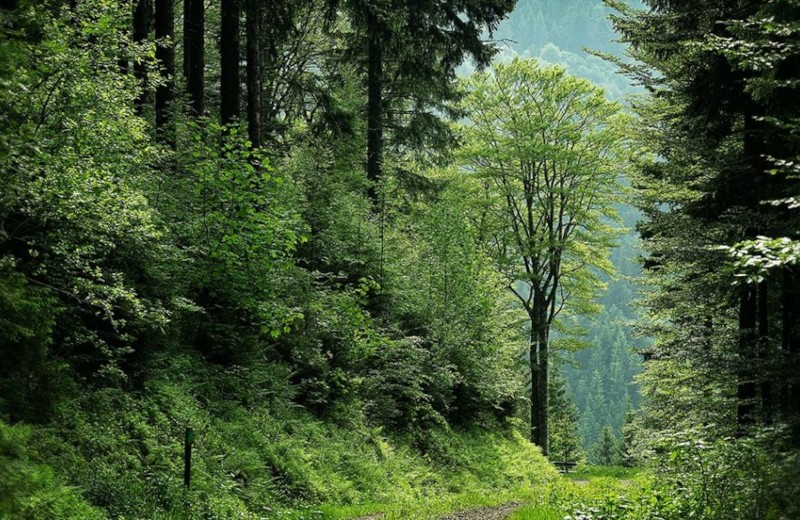Table of Contents
Forests are carbon sinks, havens of biodiversity and a major part of the solution to climate change
Forests cover around a third of the world’s land area [1] and have a central role to play in the global climate cycle as carbon sinks, storing huge quantities of carbon in plant biomass and in the soil. Estimates vary, but it is possible that between a third and a quarter of all energy-related CO2 emissions have been turned into forest and soil biomass through the process of photosynthesis. As forests burn, decay or are degraded by human activity, a proportion of that carbon is returned to the atmosphere.
But the forest carbon sink is still declining
Despite international commitments such as the International Union for the Conservation of Nature’ s 2011 Bonn Challenge, under which nearly 50 countries committed to restore 150 million hectares of forestry by 2020 and 350 million hectares by 2030, natural forests remain under serious threat. For comparison, the UK is 24 million hectares in area, France is 54 million hectares and India is 297 million hectares [2] . Despite these commitments, the global forest sink is still declining, with a third of natural forests having been felled or altered over the last century, according to the UN Food and Agriculture’s 2020 State of the World’s Forests report. Although the rate of destruction has declined since the 1990s, forests remain under huge threat of continued degradation owing to the effects of climate change itself. As the author of a May 2020 paper in the journal Science told the UK newspaper the Guardian:
[There is] mounting evidence that climate change is accelerating tree mortality, increasingly pushing the world’s forests towards being both younger and shorter.
[Forests] have been getting smaller and younger over the last century, primarily because of the effects of human land use change, and disturbances like wildfires and insect outbreaks and droughts. These are things that are increasing in frequency and severity.
Another paper in Science, published in July 2019, even suggested that there is room on the planet for an extra 0.9 billion hectares of tree cover, supporting 517 billion trees and storing 205 Gt of carbon; “Such a change has the potential to store an equivalent of 25% of the current atmospheric carbon pool”, the authors wrote (Although there is discussion as to the exact numbers published by that research).
Either way, as Simon Lewis, a professor of Earth Sciences at University College London points out in an article in Nature:
The Intergovernmental Panel on Climate Change (IPCC) suggests that around 730 billion tonnes of CO2 (730 petagrams of CO2, or 199 petagrams of carbon) must be taken out of the atmosphere by the end of this century. That is equivalent to all the CO2 emitted by the United States, the United Kingdom, Germany and China since the Industrial Revolution. No one knows how to capture so much CO2.
Age, tree species as well as climatic zone all contribute to a forest’s ability to store carbon
The problem with the Bonn Pledges is that not all forests are created equal, even if they do conform to the UN FAO’s definition of a forest [3]. There is a huge difference in terms of carbon sequestration (the amount of carbon that biomass can remove from the atmosphere through photosynthesis) and carbon storage between tree species, forestry type and – of course – climatic region, humidity and altitude. Tropical and sub-tropical plants have longer growing periods and so their potential to remove carbon is always greater than temperate or boreal climatic zones.
Natural forests can store as much as 40 times more carbon in their soil than plantations or energy crops
It is true to say that managed plantations and agroforestry (which combines tree growth with croplands or pastures) can often achieve initially higher growth rates per hectare and – therefore – higher rates of CO2 sequestration per hectare than a natural forest, as a comprehensive 2018 study of over 335 scientific peer-reviewed manuscripts and published reports found . But, as the authors of that study acknowledged, it is important to take into account long term carbon storage – as well as the energy inputs which go into the planting and maintenance of managed plantations and the effects on biodiversity when considering global-scale afforestation and reforestation strategies for the long term.
And as Lewis et al highlight:
One of the major reasons plantations are not ideal for carbon storage is that regular harvest and clearing tends to release carbon dioxide every 10 to 20 years. However, natural forests, when left undisturbed, will continue to store the carbon for decades. A conservationist can understand why a monoculture of eucalyptus trees harvested regularly may not qualify as restoration, but the public can be misled by policymakers employing broad definitions of forest restoration.
Lewis’s research points to a much higher carbon sequestration potential for natural forests, which contain a mix of species and are not grown either for energy crops or for exploitation by the timber, paper and packaging trade.
In short, if the entire 350 million hectares [based on the commitments mentioned above under the Bonn Challenge] is given over to natural forests, they would store an additional 42 petagrams of carbon by 2100. Giving the same area exclusively to plantations would sequester just 1 petagrams of carbon or, if used only for agroforestry, 7 petagrams of carbon.
Furthermore, we find, on average, that natural forests are 6 times better than agroforestry and 40 times better than plantations at storing carbon.
These are hugely significant findings, made only more urgent by recent research in the UK showing that more than half of the timber harvested from commercial plantations in the UK ‘is used for less than 15 years and a quarter is burned’, making the carbon storage potential of commercial forests probably smaller than previously imagined.
Rate of tree carbon accumulation increases continuously with tree size
These findings can be set beside important 2014 findings from the US Geological Survey’s Nathan Stephenson’s et al, in a study which examined the rates of carbon accumulation over time of over 400 different species of single tree. While it is often argued that young trees will outstrip older, larger trees in terms of growth rate and sequestration productivity, Stephenson argued that:
Large, old trees do not act simply as senescent carbon reservoirs but actively fix large amounts of carbon compared to smaller trees; at the extreme, a single big tree can add the same amount of carbon to the forest within a year as is contained in an entire mid-sized tree…
The apparent paradoxes of individual tree growth increasing with tree size despite declining leaf-level and stand-level productivity can be explained, respectively, by increases in a tree’s total leaf area that outpace declines in productivity per unit of leaf area and, among other factors, age-related reductions in population density.
Endnotes
[1] Global forest area is 4.06 billion hectares according to the UN FAO. Between 2015 and 2020, the rate of deforestation was estimated at 10 million hectares per year, down from 16 million hectares per year in the 1990s. The area of primary forest worldwide has decreased by over 80 million hectares since 1990.
[2] A hectare is a British Imperial unit of area. 1km2 is equal to 100 hectares
[3] UN FAO definition of a forest: Greater than 0.5 hectares in area, trees at least 5 metres high and more than 10% canopy cover
Further Reading:
For a snapshot and analysis of the world’s forests, read this
The Forest Observation System, building a global reference dataset for remote sensing of forest biomass can be found here
The Global Forest GHG Emissions Database offers historical emissions from deforestation and dominant forest degradation activities, including timber harvesting, fuelwood extraction, and fire here
Professor Simon Lewis’s analysis of the carbon storage potential of natural forests versus plantations is set out here
Blanca Bernal et al’s comprehensive analysis of the carbon removal rates of different forest restoration activities is published here
Nathan Stephenson’s work (based on the study of 403 tree species and showing that the rate of tree carbon accumulation increases continuously with tree size) is here
In January 2020, Wired Magazine ran an excellent long-read by Brooke Jarvis on “Why Old-Growth Trees Are Crucial to Fighting Climate Change” which is well worth a read.




